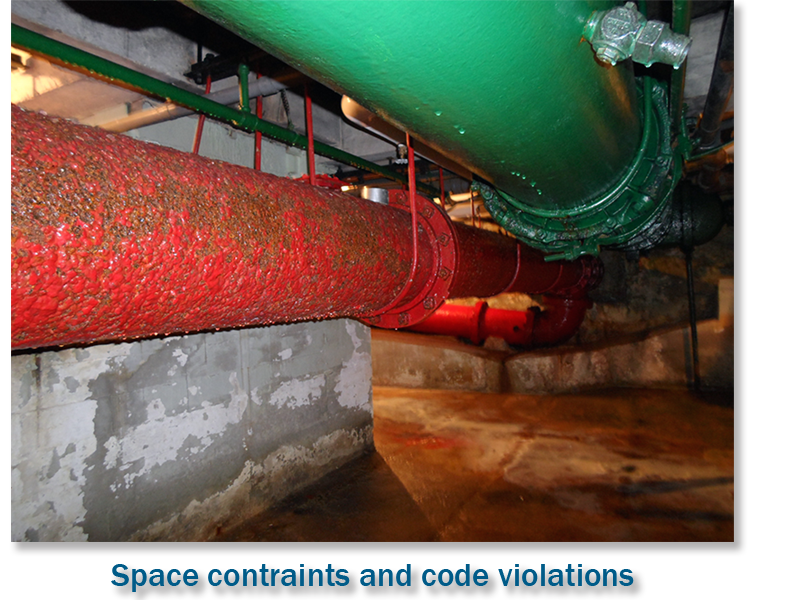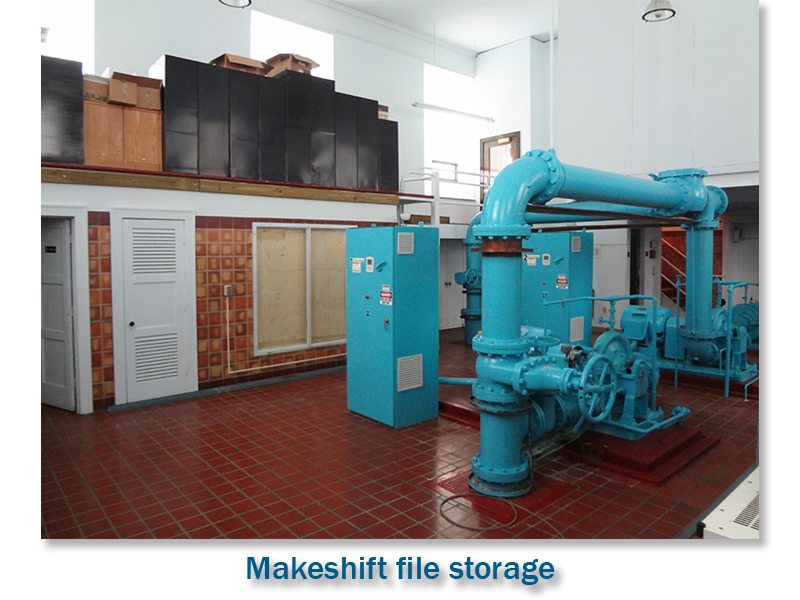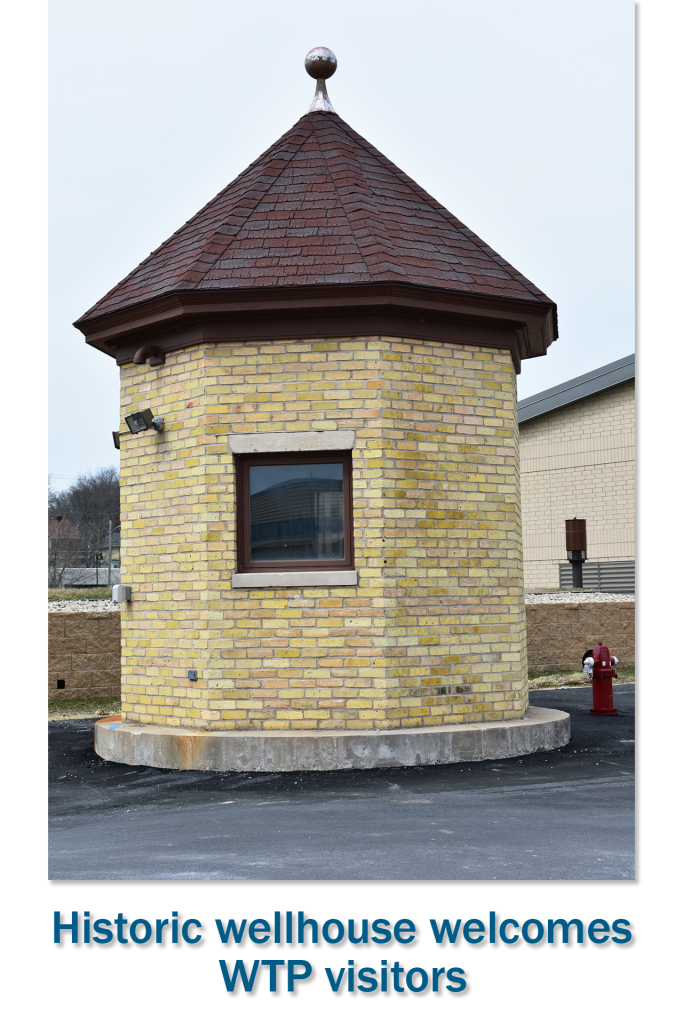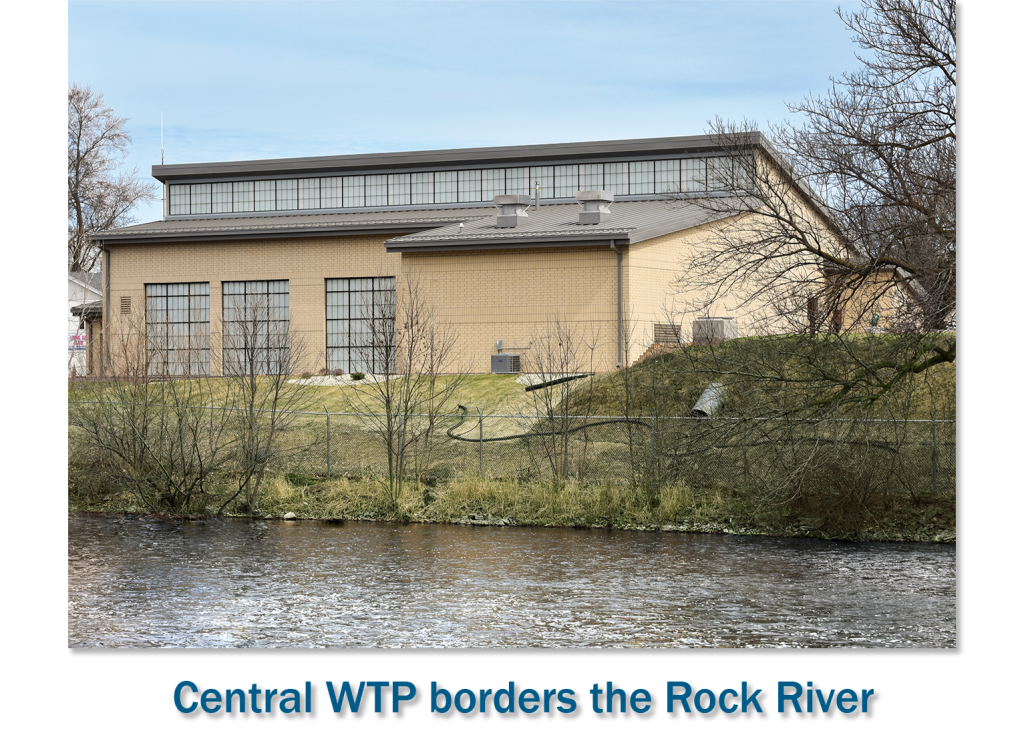New Water Treatment Plant: Preparing for the Future, Preserving the Past
History has blessed us with numerous engineering and architectural marvels that have withstood the test of time: Stonehenge, the Acropolis, and Easter Island just to name a few. However, while these breathtaking structures are great learning tools, they are not relied upon daily for one of civilization’s most basic needs: clean water. The City of Watertown confronted this issue in 2015. Constructed in 1895, its Central Water Treatment Plant was deteriorating and busting at the seams.
Watertown hired Applied Technologies, Inc. (ATI), to update its the Water System Master Plan. The update recommended various system improvements, the most urgent of which was an upgrade to the historic Central Water Treatment Plant (WTP).
Project History

The City of Watertown supplies water to 24,000 Jefferson and Dodge County residents. Water is obtained from ten groundwater wells, treated at three separate treatment plants, and then distributed via the Central, West, and Northeast service zones. The Central WTP had been an integral part of the City’s water infrastructure for over 120 years, treating half of the City’s water supply with a nominal capacity of 6.0 mgd. Its historic Well No. 1 and Water Department building were constructed with the brick and rubble from an old Rock River mill in 1896. Upgrades were made throughout the ensuing decades to add iron removal filters and increase filtration capacity.
Though the City took great care in maintaining and upgrading its water infrastructure, time had taken its toll on the Central WTP. The facilities were in poor condition, energy inefficient, insufficient to meet operational needs, and violated various current code requirements. In addition, the plant was incapable of meeting the projected year 2035 population water supply needs. Various other components were experiencing issues as well:

- Limited space in the maintenance building forced staff to store vehicles and inventory at various locations throughout the city.
- The filters and filter building had been in use for 50 years and were experiencing integrity failures.
- Filter media was designed for iron removal only and lacked provisions for manganese.
- Piping, pumps, and related valves were part of the original construction in 1895 and had clearly exceeded their expected design lives. Water piping was severely corroded, and the underground locations of piping, pressure valves, and flow meters made maintenance difficult and dangerous.

Construction of a new Central WTP was determined to be the most cost-effective solution, providing the City with reliable water treatment for at least the next fifty years.
Innovation
Located in a residential area on the Rock River, the restrictive footprint of the WTP required creative siting and construction of the new facilities. The decision was made to construct a new water maintenance building on the City’s spacious wastewater treatment plant site. The 15,200 square foot pre-engineered metal building was designed to match the existing plant buildings and includes features such as vehicle storage bays, offices, a locker room, and parts storage.
Staging procedures outlined in the Water System Master Plan Update were carefully crafted to ensure continued water treatment. The Central WTP was taken completely offline throughout construction, and water utility operators were able to treat and deliver potable water through use of the City’s remaining storage and treatment capacity.
Also, complex trenching was necessary for several deep underground piping connections to prevent damage to existing structures.
Social, Economic and Sustainable Design Considerations
Improved Water Quality
The City’s water quality has improved due to more effective iron removal and the addition of manganese removal using horizontal pressure filter vessels. These filters are designed to remove iron and manganese to maximum concentrations of 0.3 mg/l and 50 µg/l, respectively, to meet the secondary standards for potable water.
Energy Savings/Sustainability
- Redundant pumping operations were eliminated, and the installation of variable frequency drives reduced energy usage of the pumping equipment.
- The new building conforms to modern building codes to reduce heating and cooling energy use.
- Translucent clerestory and wall panels provide natural light in most areas of the new pump and filter building, reducing the use of artificial light energy. The four translucent wall panels are removable, eliminating the need for building modifications when the filters eventually require replacement.
Historical Reverence
The City of Watertown’s Historical Society initially resisted the City’s desire to demolish the Central WTP building. While appreciating the building’s significance, ATI debated that modifications made throughout the years had reduced its historical value and, unfortunately, its continued use would be unsafe. The Water Department and Historical Society reached a compromise: several historical architectural appurtenances would remain untouched, and the new building’s design would honor the old building:

- Distinctive cream-colored bricks pay homage to the original building.
- Well No. 1, which was built during the plant’s initial construction, greets visitors at the entrance to the new building.
- Several historically significant items were saved for curation: two copper and iron door hoods, gas wall-mounted sconces from the Pump Room, and a large wall plaque listing the names associated with the early history of building.
Social Impacts
The new 8,000 square foot Central WTP filter building was loosely designed to mimic the rooflines of the nearby Senior & Community Center and Parks & Recreation Department. Clerestory-style steel roof trusses were used to provide a unique, modern look, and the brick façade was chosen to complement the plant’s remaining historical structures.
Complexity
Several factors affected the complexity of this project:

- Reliance on the Central WTP, as it treats over half of the City’s potable water supply
- Small, restrictive site
- Ages and locations of underground piping
A hydraulic analysis indicated that the well capacity and West and Northeast WTPs could supply, treat, and store adequate drinking water while the Central WTP was under construction and completely offline. Also, in order to meet the needs of the Water Department, it was beneficial to relocate offices and storage to a new building at the City’s spacious wastewater treatment plant.
Exceeding Client/Owner Needs
Client Engagement
ATI worked closely with City and Central WTP staff. Frequent client meetings kept staff engaged from the design phase through construction and start-up. Regularly scheduled design progress meetings provided opportunities to formally review design deliverables and approve concepts.
Cost-Efectiveness
ATI conducted monetary and non-monetary evaluations for various design concepts in order to determine the most cost-effective alternative. The most time-intensive evaluation was that of the filter building. ATI offered various options for two different building types: separate pump and filter buildings and a combined pumping/filter building. A combined pump and filter building was ultimately selected, as it was deemed more energy efficient and cost-effective in the long-term.
The combined building offers several desirable features:

- Process piping is easily accessible, remains indoors, and offers runs that are shorter and more cost-effective. The separated building option would have required that the discharge and chemical piping be buried to prevent freezing.
- Translucent wall panels were used as a clerestory in the roof structure, providing an abundance of natural light and reducing the need for artificial light energy usage.
- Four large translucent wall knockout panels eliminate the need for future building modifications in order to replace the filters.
- Pre-engineered steel trusses span the entire building without the use of columns. Steel trusses last longer and costs less than their wooden counterparts.
- Standing seam metal roofs were chosen because they are weather tight and often last more than 50 years.
- Masonry cavity wall construction generates additional thermal insulation to reduce heating and cooling costs.
The new plant costs less to operate and maintain than the original plant. Perhaps more importantly, its future capital costs will be significantly less than the improvements anticipated for the old building. The new Central WTP will provide the City with usable facilities for the next fifty years.
Leave a Comment